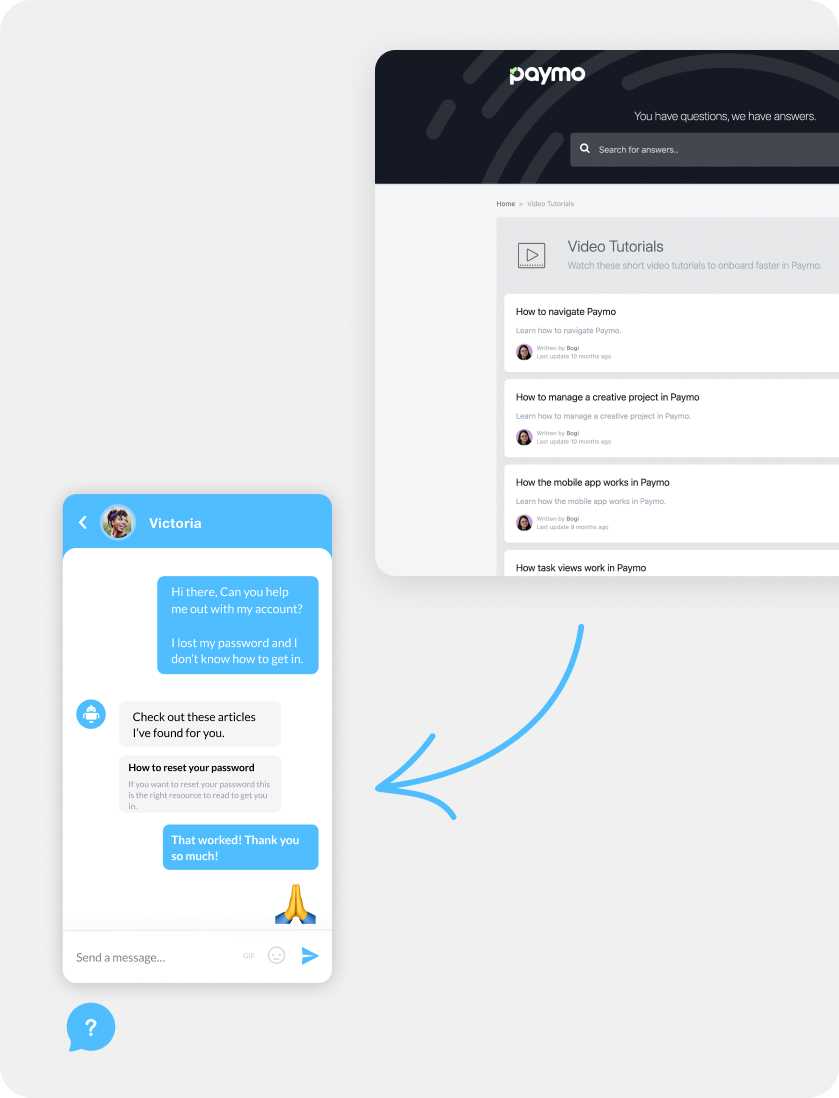A knowledge base is essential for customer support, as it allows businesses to easily access and shares relevant and helpful information with customers.
As found in this Harvard Business Review article, today, 84% of customer contacts are handled through self-service compared to 30% in 2006.
This article will discuss the key features and benefits of a knowledge base for customer support and provide some best practices for creating and maintaining a successful knowledge base.
What does knowledge base mean?
The knowledge base definition is a collection of organized, easy-to-access information that supports and assists customers and employees.
It typically includes a wide range of information, such as product or service descriptions, FAQs, troubleshooting guides, and other helpful resources.
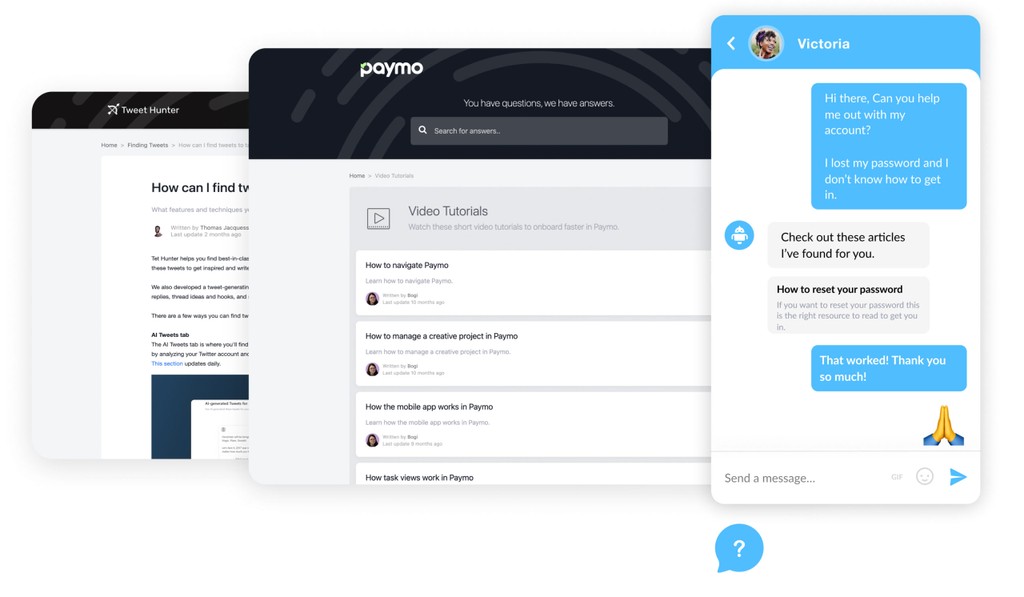
A knowledge base can take many forms, including a dedicated website or platform, an internal database, or a collection of documents and resources.
The most important thing is that the information is organized and easy to access, so customers and employees can quickly and easily find the information they need.
What is the purpose of a knowledge base?
The purpose of a knowledge base is to provide users with a collection of organized information that is accessible and easy to use.
By providing customers with self-service support, a knowledge base software can help reduce the workload of customer service teams and improve the speed and efficiency of support.
In addition to its use in customer service, a knowledge base can also be useful for internal knowledge transfer with human resources within an organization.
A knowledge base software can help improve productivity and collaboration within the organization by providing employees with a central repository for important information.
Overall, the main purpose of knowledge bases is to provide users with a collection of organized information that is easy to access and use.
Best practices for creating and maintaining a knowledge base for customer support
There are several best practices to follow to create and maintain a successful knowledge base for customer support.
Let’s see them one by one.
Organize and categorize information
To make the information in your knowledge base easy to access and navigate, it is important to organize and categorize it logically and intuitively.
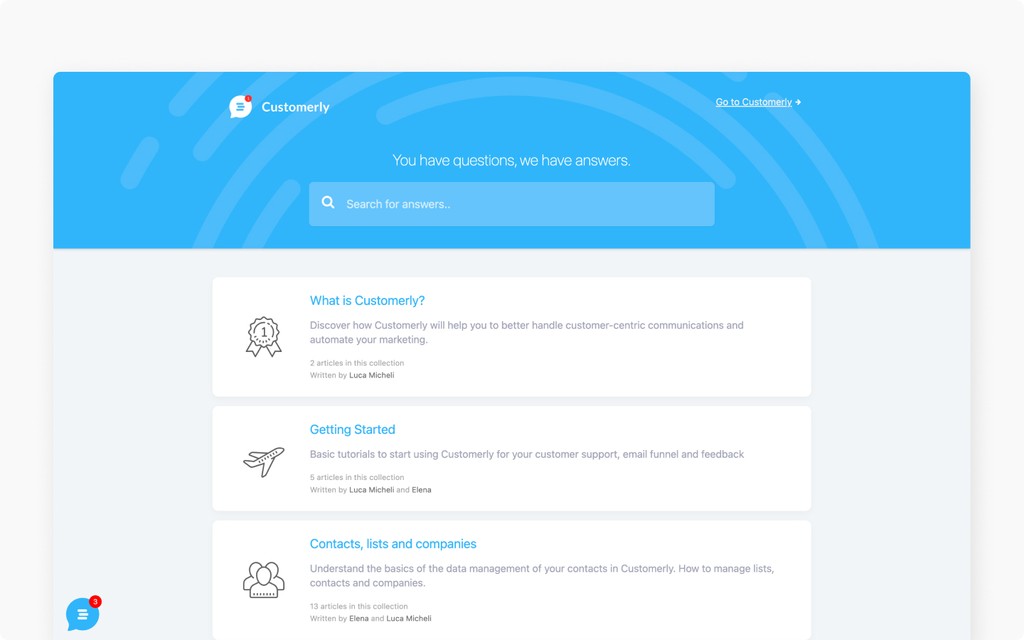
If your business sells software, make sure your knowledge base is easily accessible from the main menu and landing page footer.
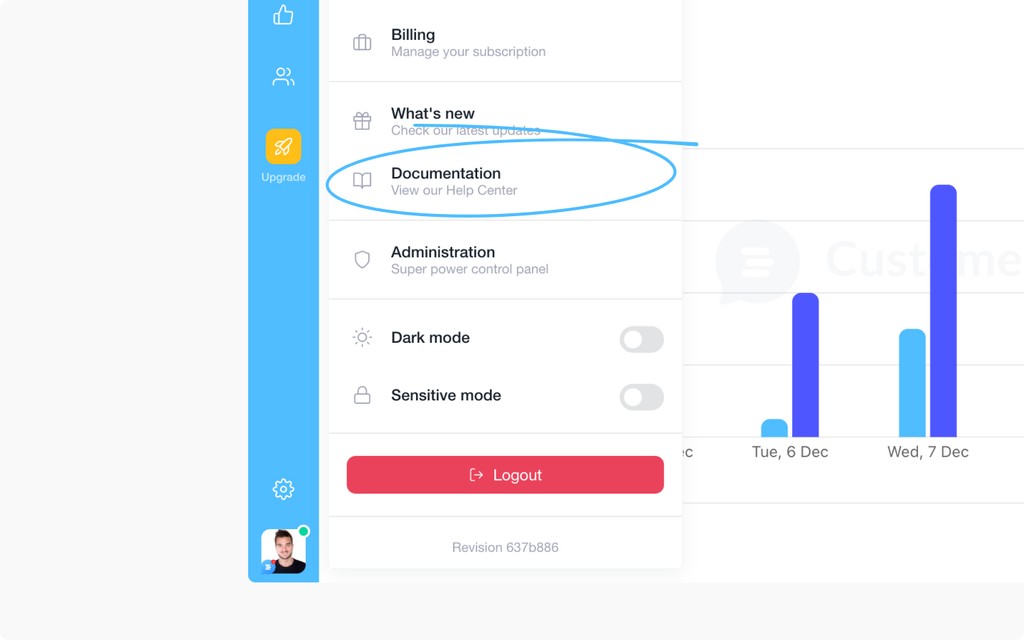
This can include creating categories and subcategories and using clear and descriptive titles for each piece of information.
This will help your customer service team to research your knowledge base articles quickly and share them with your demanding customers.
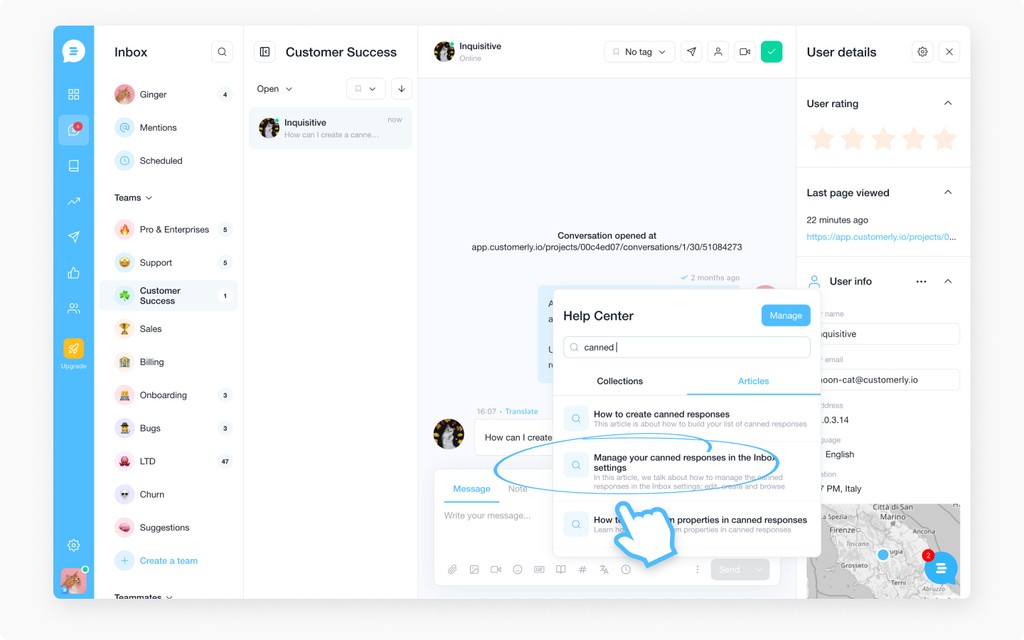
Provide relevant and helpful information
The information in your knowledge base should be relevant and helpful to your customers, providing answers to their common questions and concerns.
It should be written clearly and concisely, using language and terminology that is easy for customers to understand.
Keep the information up-to-date
It is important to regularly review and update the information in your knowledge base to ensure that it remains accurate and up to date.
Use Video tutorials and attachments
Some people prefer to read, others to watch a video to get help.
Your customer success team might create video tutorials for new and existing customers on relevant subjects to help them succeed.
Like one of our customers did with their video tutorials collection at Paymo.
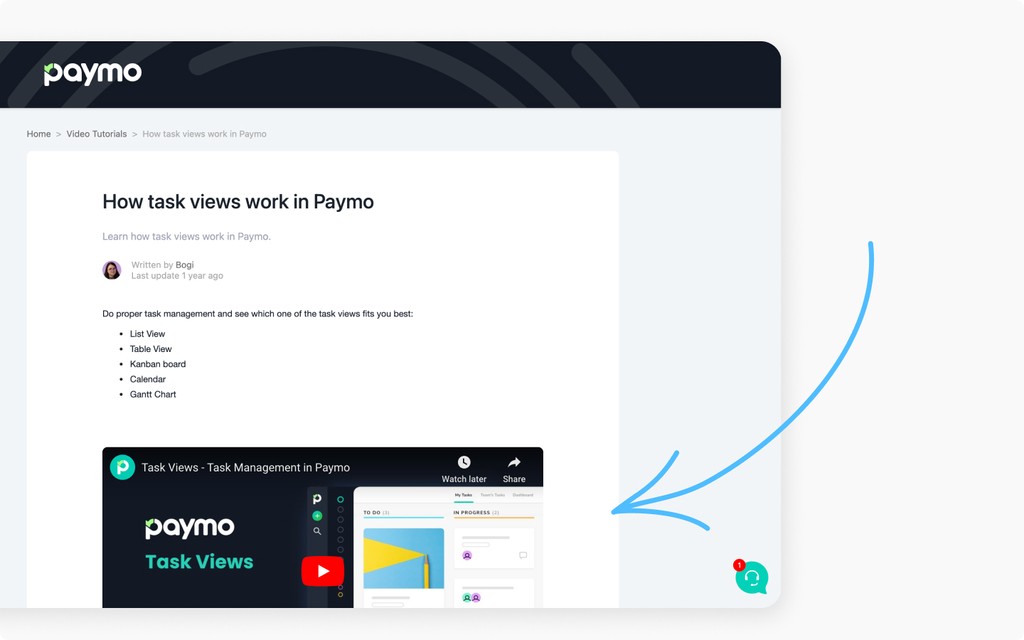
What are the types of knowledge bases?
There are two main types of knowledge bases: internal and external.
Internal knowledge base
An internal knowledge base is a collection of information that is only accessible to employees within an organization. It empowers businesses to share company knowledge effectively, securely, and privately.
It is often used for storing company-specific information, such as company policies, procedures, and internal documents.
As you can see, this is a collection of our internal knowledge base shared with our employees on handling admin tasks on the platform.
Your employees benefit from searching all the information related to a specific task and the how-to guides instead of going back and forth within the organization.
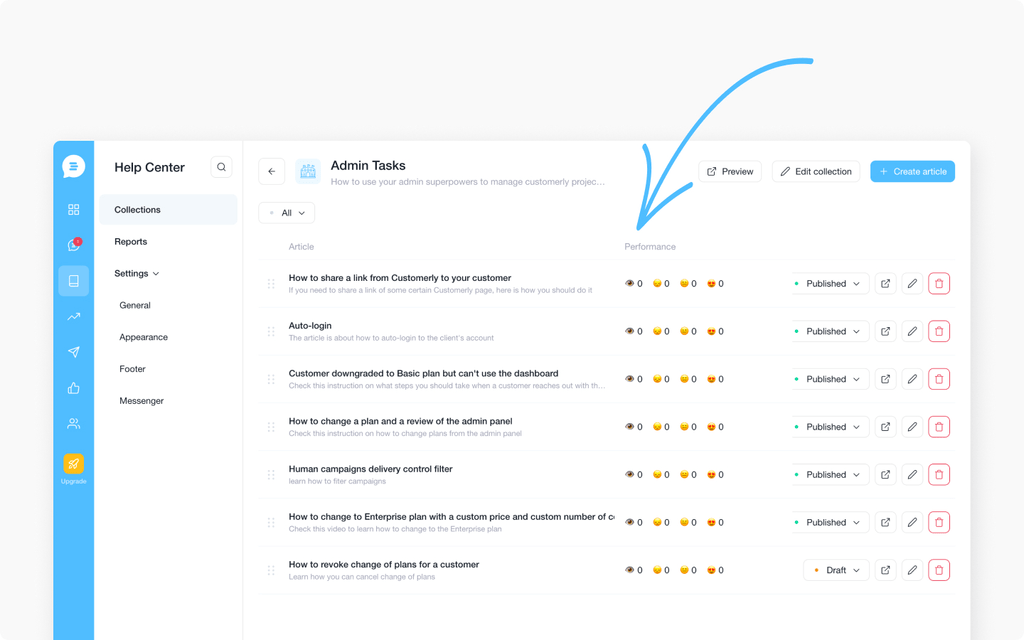
An internal knowledge base can be a valuable tool for improving knowledge management within an organization, as it provides employees with a central repository for important information.
Internal Knowledge base benefits and examples
When the team is scaling fast, an internal knowledge base software helps your team to stay on track with different procedures. Let’s see some examples of knowledge base content that benefit multiple people in your organization.
- Technical support Inquiries: How to handle a specific technical issue that is not supposed to be exposed to the public.
- Company Policies: For example, how to treat discounts, what kind of customers are allowed to perform certain actions, and so on…
- Business processes: How to ship a product or how to interact with customers
- Best coding practices: Help your dev team fit in the company’s best practices for developing your software.
- Internal how-to guides: How to handle refunds or how to access a customer admin panel.
- Troubleshooting instructions: How to troubleshoot complex issues with the software.
- Sales team best practices: Creating procedures for the sales team to follow.
- Onboarding new customers: How to articles to onboard new customers, especially for enterprises.
- Marketing team best practices: Which UTMs to use, where, or which ads should be published, and what’s not allowed.
- Onboarding new employees practices: When onboarding a new employee what’s the best practice? Which service should be shared and which permission should they have?
- Content creation guidelines: If your organization has several employees creating content, you might want to have a dedicated collection covering different aspects.
Creating a knowledge base for your internal processes will help your support team develop better customer service skills.
How to build an effective internal knowledge base?
There is no one-size-fits-all approach to creating internal knowledge bases, as each organization’s specific needs and goals will vary.
However, some general best practices can help ensure the success of your internal knowledge base.
First, involving stakeholders from across the organization in planning and developing the knowledge base is important.

This will help ensure that the information included in the knowledge base is relevant and useful to the people using it.
Above all, including different stakeholders will provide accurate information and a more effective knowledge base.
Second, creating a clear and well-defined structure for the knowledge base to easily organize and access information is crucial.
This may involve creating categories and subcategories and using tags and keywords to help employees find what they are looking for.
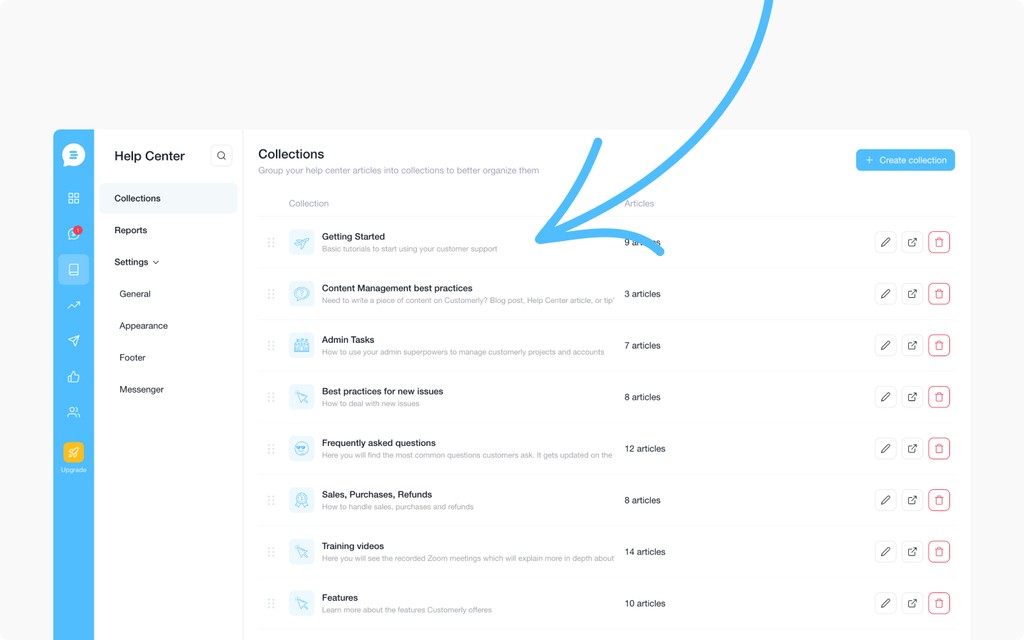
Third, it is important to regularly maintain and update the knowledge base to ensure its information is accurate and current.
This may involve periodically reviewing and updating existing content and adding new information as it becomes available.
Overall, the key to creating a successful internal knowledge base is to involve stakeholders, create a clear structure, and regularly maintain and update the information it contains.
You can choose an internal knowledge base software accordingly to your internal needs. Check this article to discover more about them.
External knowledge base
On the other hand, an external knowledge base is accessible to both employees and customers.
Businesses commonly use it to provide self-service support to customers, allowing them to find answers to common questions and issues without contacting customer support.
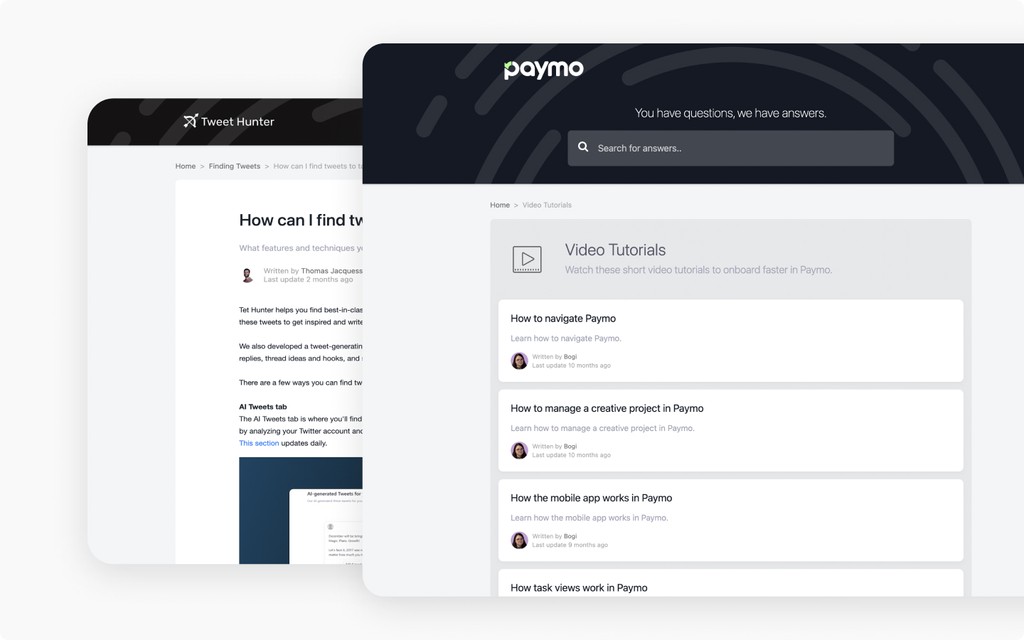
An external knowledge base can be a valuable tool for improving customer satisfaction, as it provides customers with a convenient way to find answers to their questions.
In addition to these two main types of knowledge bases, several subtypes of knowledge bases are commonly used.
For example, a FAQ knowledge base collects frequently asked questions and answers.
A document knowledge base is a collection of documents, such as manuals, guides, and tutorials.
A multimedia knowledge base is a collection of multimedia content, such as videos and images.
The main knowledge bases are internal and external, with several commonly used subtypes.
The type of knowledge base that is most appropriate for a given organization will depend on its specific needs and goals.
Why is an external knowledge base important for customer support?
Having an external knowledge base profoundly benefits your business.
It’s essential for customer support, as it allows a customer service team to easily access and shares relevant and helpful information with customers.
It can provide several key benefits, including:
Improved customer satisfaction and loyalty
A knowledge base allows customers to quickly and easily find answers to their questions and concerns without having to wait for a response from customer service representatives. This can improve customer satisfaction and loyalty, increasing business and revenue.
Improved efficiency and effectiveness of customer service teams
A knowledge base can improve the efficiency and effectiveness of your customer service team.
Support teams can use the knowledge base to quickly and easily access the information they need to provide solutions to customer concerns without having to spend time researching or seeking out answers.
Improved accuracy and consistency of information
By organizing and centralizing information in a knowledge base, businesses can ensure that customers receive accurate and up-to-date information.
This can improve the trust and confidence of customers in the company and reduce the risk of providing incorrect or outdated information.
Increased self-service options
A knowledge base can provide customers with self-service options, allowing them to find answers to their questions and concerns independently without contacting customer service representatives.
This can reduce the workload on customer service teams and improve the overall customer experience.
Thanks to Customerly in-app and contextual knowledge base our customers saved $11,6M of support ticket expenses.
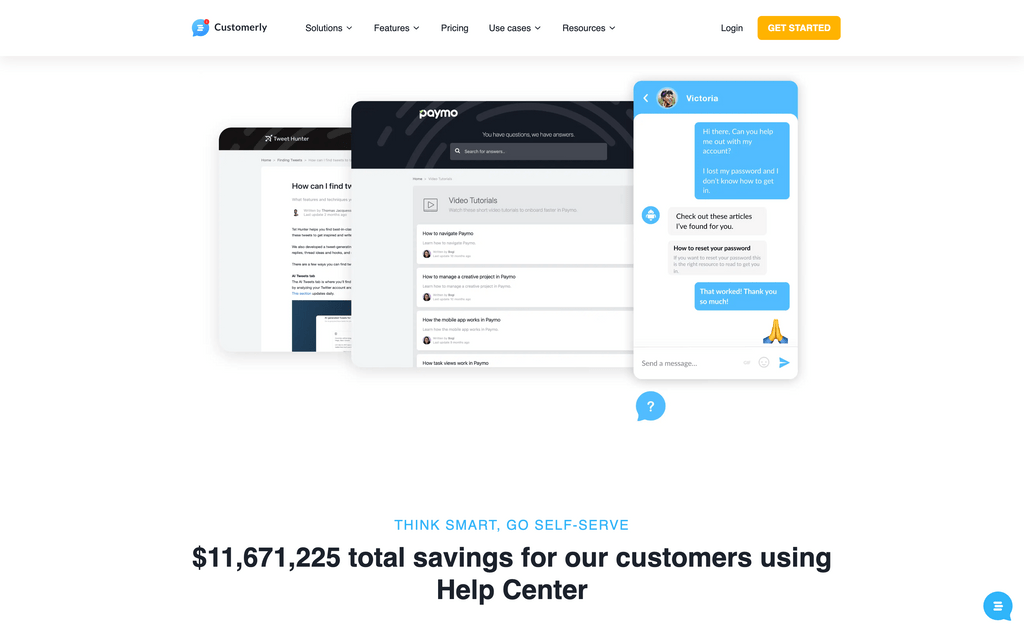
The best knowledge base software also provides proactive search functionality to suggest related articles to customer inquiries.
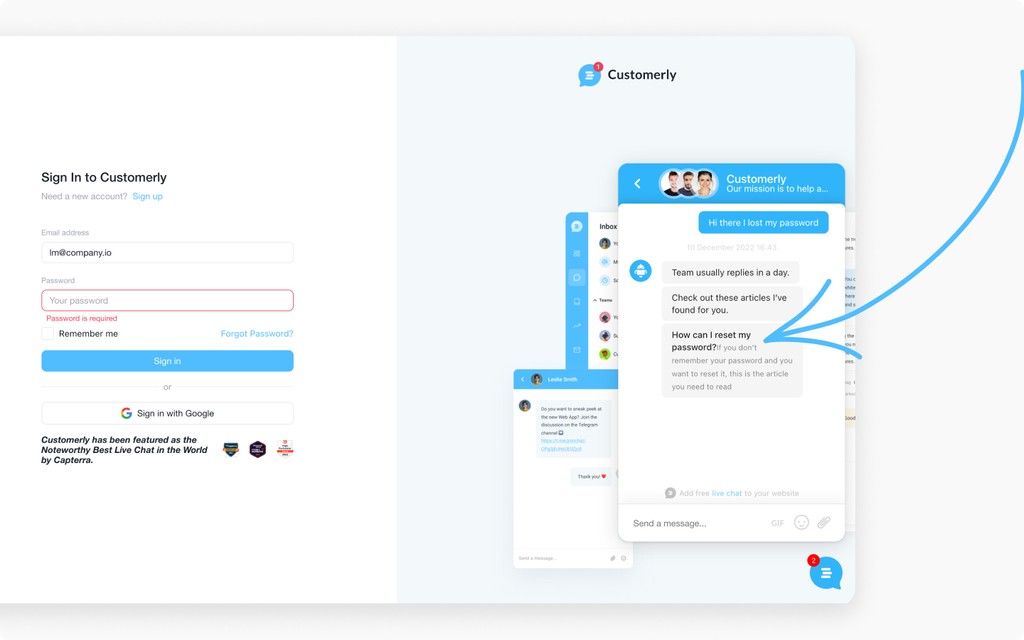
This will improve customer experience since the proactiveness of the customer-facing knowledge base will be faster than any support team.
Improved collaboration and sharing of information
A knowledge base can be a central repository for information and resources, allowing teams and departments to easily share and access information.
This can improve collaboration and coordination and ensure that all teams have access to the information they need to provide effective customer support.
Other external knowledge base benefits
Elad Eran, VP Customer Solutions at WiX explained that their Knowledge Base Software is one of the main sources of high-quality organic traffic.
Our Customerly help center is optimized for SEO as well and as you can see, we have got thousands of clicks and impressions in 12 months.

This is definitely one of the hidden benefits of having a public knowledge base.
Your marketing team will thank you.
What’s the difference between a help center and a knowledge base?
I’ve always asked myself the difference between a help center and a knowledge base?
A help center and a knowledge base are, in fact, quite similar in that both are collections of information that are organized and accessible to users.
However, there are some key differences between the two.
One of the main differences is the intended audience.
A help center typically focuses on customer support, while a knowledge base is often used for internal knowledge base management within an organization.
As a result, a help center is typically more user-friendly and focuses on providing customers relevant and useful information.
Another key difference is the scope of the information included. A help center is often more limited in scope, containing only information relevant to customer support.
On the other hand, a knowledge base can be more comprehensive, containing a wide range of information relevant to the organization.
Overall, the main difference between a help center and a knowledge base is the intended audience, and the scope of the information included.
How to create a good external knowledge base structure?
Creating a clear and well-defined structure for your knowledge base is crucial for making it easy for users to find the information they are looking for.
Here are some steps you can follow to create a knowledge base structure:
- Identify the main categories and subcategories for your knowledge base. For example, if you are creating a knowledge base for a software company, some main categories could be “Getting Started,” “Using the Product,” and “Troubleshooting.”
- Within each main category, create subcategories that provide more specific information. For example, under the “Using the Product” category, you might have subcategories for different features of the product, such as “Creating Documents” and “Sharing Files.”
- Use tags and keywords to help users find knowledge base articles within each subcategory. For example, under the “Creating Documents” subcategory, you might use tags such as “text formatting” and “page layout” to help users find specific articles.
- Consider using a search function in your knowledge base to allow users to easily search for information using keywords or phrases.
Overall, the key to creating a useful knowledge base structure is to organize information in a way that is logical and easy for users to navigate.
By carefully planning your categories and subcategories and using tags and keywords to help users find what they are looking for, you can create a knowledge base that is both comprehensive and user-friendly.
Knowledge base templates to create yours
Many great knowledge bases are out there, providing valuable information to customers and employees.
Here are a few examples of knowledge bases collections that are considered to be particularly effective.
Getting Started
Use this collection to help new users get started with your products or services. Provide as much information regarding the best practices your best users are using the get to the wow moment.
Software documentation
Document as much as possible how every single feature of your software works. Don’t let your customers wonder, nor your customer service. The better you document, the faster your time to the solution will be.
Shipping or tracking information
Most people will certainly ask for shipping and tracking information if your company provides physical products that require a shipment. Create a knowledge base collection related to shipping and tracking information.
Subscription types and limitations
Even if you have plenty of pages explaining your software subscription and related features, people will always ask for more information about it. Create a collection of information regarding all your subscription types and how they differ.
FAQ
When a question is asked twice, that’s the red flag to start writing a knowledge base article in your FAQ collection. Next time the autoReply will answer that question for you.
Migration guides
If you are updating your product and it requires your customers to update or migrate APIs, you might want to create a migration guide to share publicly. This is an example of a migration guide when we updated our live chat from V1 to V2.
Video tutorials
Use video tutorials in your knowledge base articles to improve product adoption.
Billing information, Invoices
One of the hot topics is definitely billing and invoices. Create a knowledge base collection regarding where people can find invoices, what can go wrong, and how to change billing information such as company address and payment method.
User/Account Settings
Create another knowledge base collection regarding how your users can change their account settings and where.
Integrations
If you provide different integrations requiring in-depth knowledge, you want to create easy-to-read documentation in your knowledge base.
Troubleshooting
It is always a good idea when you see recurring issues to improve your UX or fix the issue, but meanwhile, you can create a knowledge base collection to help them troubleshoot recurring issues.
API
If your service includes API, is always a good idea to create a knowledge base regarding how your customers can easily integrate with your Public API.
Privacy, GDPR & Terms of Service
Even if you provide links to GDPR, privacy, and terms of service everywhere, it is a good idea to provide them in your knowledge base for quicker access.
Now that you have a knowledge base template, you might want to check which knowledge base software options you have for creating yours.
Let’s start.
What’s a knowledge base software?
A knowledge base software is a tool that allows organizations to store, organize, and access all their important information in one place.
This can include articles, documents, FAQs, and other content easily searched and accessed by users.
You can also consider using shared document systems like Google Drive or Dropbox to do knowledge sharing within your company.
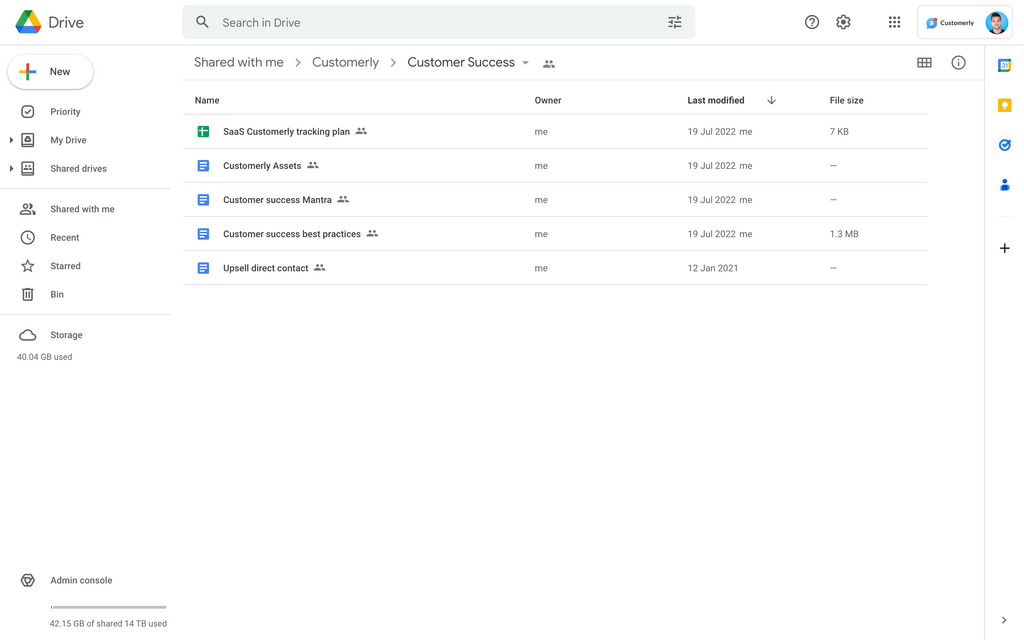
A dedicated Knowledge base software is commonly used by businesses to provide customers with self-service support and to improve internal knowledge management.
Some of the knowledge base software support customers automatically with the help of Artificial Intelligence, like in the example below.

Your customer support team also benefits from using Artificial Intelligence connected with your knowledge base because it will reduce the number of support tickets they need to handle.
So maybe you are wondering how you can find the best knowledge management system and what’s important to consider when choosing one for the internal knowledge management process and customer knowledge base.
How to find the right knowledge base software?
Finding the best knowledge base software can be challenging, as there are many knowledge base tools available, and each product has unique features and capabilities.
Here are some steps you can follow to help you find the best knowledge-base software for your needs:
Identify your specific needs and goals
Before you start looking for a knowledge base software, it is important to clearly understand what you want the software to do and how it will be used.
This will help you identify the features and capabilities that are most important to you.
For example, you might want to create self-service content to help to onboard new users.
You might want to search for a self-hosted knowledge base or a knowledge base tool software.
Research different knowledge base software options
There are many knowledge base software products available, so it is important to research to find the best options for your needs.
You can start by looking at reviews and ratings of different products and reading about their features and capabilities.
Consider the user experience
One of the key factors to consider when choosing knowledge-base software is the user experience.
The software should be easy to use and navigate, so employees and customers can quickly and easily find the information they need quickly and easily.
An example of a knowledge base that provides exceptional user experience?
Making your knowledge base accessible everywhere, contextually, whenever the user is.
For example, Customerly will let you create a help center that is easily accessible through the live chat and your customers will be able to search immediately and answer themselves without leaving the page.
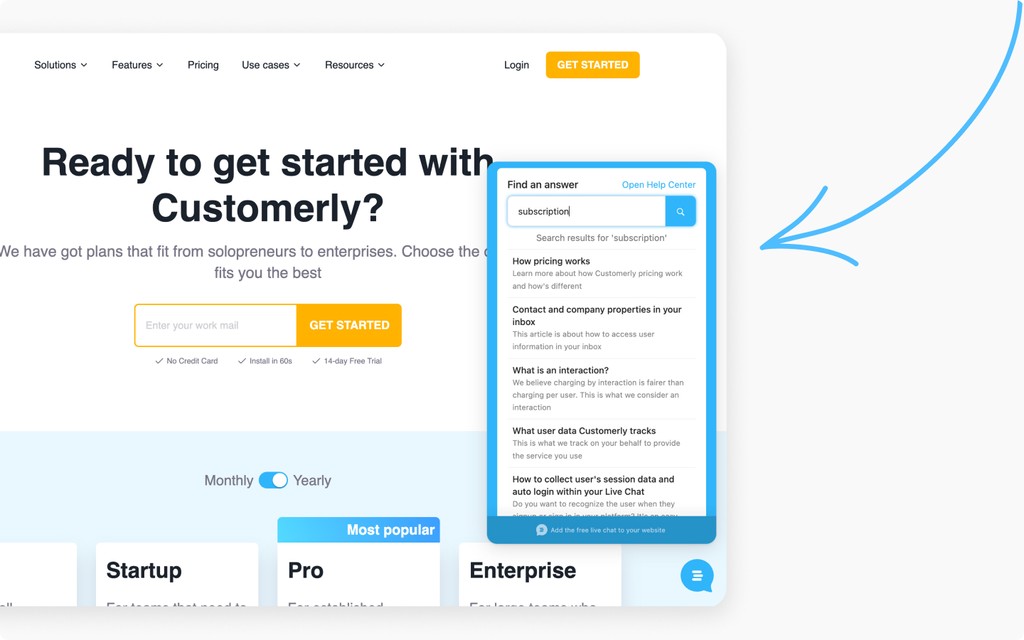
Il will help to provide excellent customer service whenever the customer wants to explore customer-facing knowledge bases or reach out to human support.
Fully Integrated with your customer support tool
There is no sense in switching between different software to get the information you and your customers are searching for.
This is important to evaluate a dedicated knowledge base software that is already integrated with your customer support software instead of having a traditional knowledge base.
External knowledge bases will not be able to fully integrate with your customer support tool and will add some friction either on your support team or customer experience.
For example, you want to provide a live chat on your hosted knowledge base, and vice versa, have the articles within your live chat backend.

Evaluate the pricing and support
Another important factor to consider is the pricing and support offered by the knowledge base software provider.
You will want to find an affordable product that offers the level of support you need.
Conclusions
The earlier you document internal and external processes, the faster your company grows.
This is why it is crucial to have internal and public-facing knowledge base software to help you document every aspect of your business.
Create knowledge base content to help your support team, and customers access valuable information quicker.
Get your free knowledge base today
Reduce customer support inquiries and solve more issue fast with Customerly Help Center



